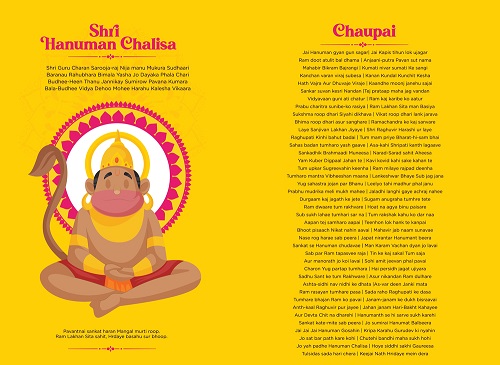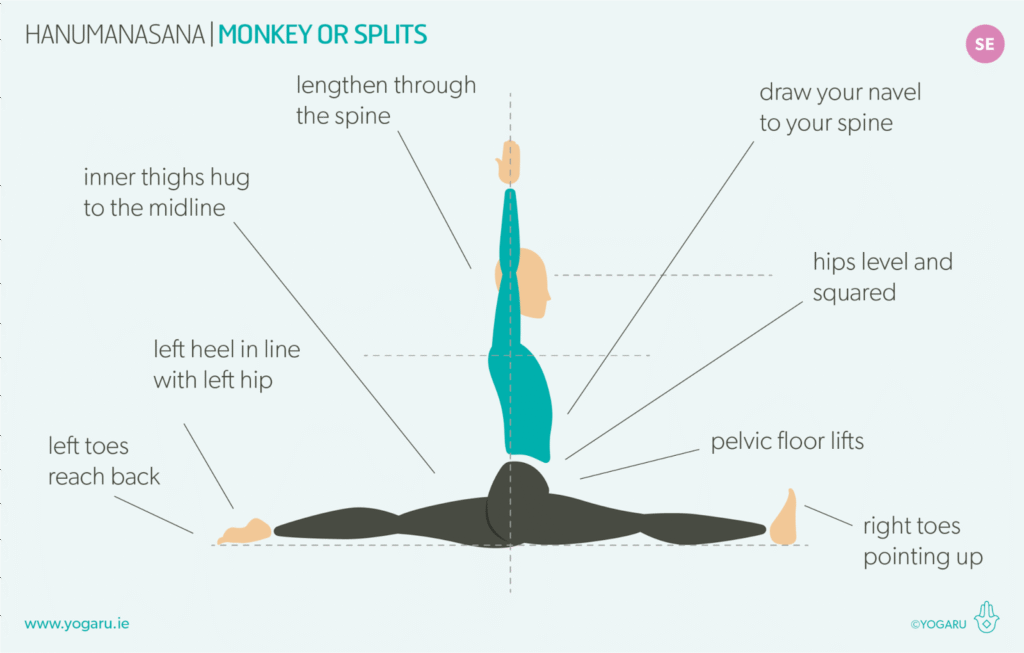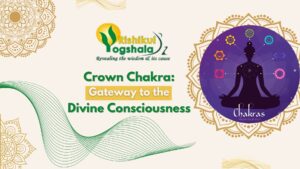In the sacred town of Rishikesh, where the holy Ganga flows, every breath seems to carry both discipline (Sadhana) and devotion (Bhakti), blends exactly what the Hanuman Chalisa symbolises.
When you chant the Hanuman Chalisa, each verse vibrates with spiritual strength, echoing through energy channels allowing you to connect with your inner self. In rishikesh, where thousands of people around the world come for peace and awakening, the resonance of Hanuman’s devotion merges seamlessly with the discipline of yoga practice.
Hanuman Chalisa in the Modern Yogic World
In the Rhythm of today’s fast-paced life, where minds and hearts constantly seek peace, the power of Hanuman Chalisa reemerged as a universal mantra of courage and clarity. The Hanuman Chalisa was once sung only in ashrams and temples, but now it is being chanted across India in yoga studios to rishikesh, which unites students from every corner of the world because of its vibrational energy of devotion.

The Hanuman Chalisa now holds a special place in every student’s learning journey. Whether one is attending a 200 hour yoga teacher training in Rishikesh, a 300-hour yoga teacher training course in Rishikesh or a bhakti and philosophy session, students chant the Chalisa together, allowing the vibrations to resonate through their hearts and the sacred surroundings. Through this practice, it becomes a turning point in their training and helps students overcome stress, fear and self-doubt.
One important note is that when you include the Hanuman Chalisa in your life, it gently reminds modern yogis that transformation is an inner journey which unfolds when the heart opens to love, the mind surrenders its control and the practice becomes an act of devotion.
Origin of Hanuman Chalisa
When Tulsidas (a poet and devotee of Lord Rama) was imprisoned by the Mughal emperor faced challenges and also those who doubted Lord Hanuman’s divine power.
Then Tulsidas’s deep faith became his guiding light in his spiritual life and he began chanting the name of Lord Hanuman and composing verses that flowed effortlessly from his heart. Each verse was written in the Awadhi language[later translated into many languages so that people could easily read] which not only carries poetic beauty but also has a great vibrational power.
According to The Times of India, the Hanuman Chalisa remains the cornerstone of Hindu devotional practices even centuries after its creation. From morning prayers in the household to collective recitations in the temples, the Hanuman Chalisa continues to become everyone’s source of strength.

The following are some of the main verses from the Hanuman Chalisa, which not only deliver the poem beautifully but also have yogic symbolism hidden within devotion.
| Yogic trait | Stanza | Relevance to practice |
| Highest wisdom | Jai hanuman,gyan gunn sagar | This line is the declaration of victory [Jai] to Hanuman, [gyan gunn sagar], the ocean of wisdom. This line inspires the yogi to transcend ignorance and become a vast reservoir of inner wisdom like the boundless ocean. |
| Cosmic Radiance | Jai kappees tihun lok ujaagar | [Jai kapees] This word greets Hanuman as the lord of monkeys, and[ tihun lok ujagaar] represents the three states of consciousness[ wakening, dreaming and deep sleep. For a yogi, this symbolises achieving self-realisation and eliminating the darkness. |
| Matchless power | Ramdoot atulit Baldhama,anjani putra pavansut namma. | In this stanza, Hanuman symbolises the matchless power and lord rama’s messenger. This line also conveys the immense power available to the yogi who masters pranayama and cultivates pure life force. |
Hanuman Chalisa and Pranayama – The Yoga of Breath and Sound
In yogic philosophy, the breath [prana] is the carrier of life force and sound is its expression. When these two are coordinated, they create an inner echo that aligns body mind and soul. When Breathing exercises are practised with chanting the Hanuman Chalisa, the effects multiply, awakening the flow of prana, steadying the mind and creating a deep sense of inner harmony.
Some benefits of combining pranayama with Hanuman Chalisa chanting:
- Purifies the Energy Channels (Nadis)
- Strengthens Concentration and Mental Clarity
- Opens the Heart and Cultivates Devotion
- Stabilise emotions and reduce Stress
- Awakens Higher Consciousness
How to practice breathing with the Hanuman Chalisa
Choose an ideal peaceful place where you can practice these exercises. The recommended time is during the early morning [3.30 am to 5.30 am] or the evening hours, when the atmosphere is calm. If you are doing this in your room you can light up a small lamp to feel the energy of devotion rising within.
- Now sit in a comfortable, meditative posture [Padmasana or Vajrasana] with your spine straight and shoulders relaxed.
- Before chanting, take at least 5 or 8 rounds of deep yogic breathing. Inhale slowly through the nose, filling the lungs from bottom to top and hold it for a few seconds and then exhale slowly.
- This calms your nervous system and prepares your pranic field for the vibrations of the Hanuman Chalisa.
- As you begin chanting the Hanuman Chalisa, observe how each verse follows a natural rhythm.
Example
- Start by inhaling and chanting “jai hanuman Gyan gun sagar,” then slowly exhale.
- Take a one or 2-second pause, inhale and then chant jai kapis tihun lok ujagar [exhale].
This practice allows breath to flow effortlessly with devotion — each exhalation becoming an offering, each inhalation becoming a renewal of Belief.
- Now feel the vibrations in your throat, chest and heart centre while visualising each sound purifying your energy and filling you with positive light.
- If your mind diverts, gently bring awareness back to your breath and the sound of the mantra.
When you complete the Hanuman Chalisa, sit silently for a few minutes with your eyes closed while observing the stillness and vibration within you. This is called the meditative state, in which bhakti transforms into dhyana.
Finish your practice by offering gratitude to lord Hanuman.
How repetition rewires the mind Toward Peace
- When you repeat a mantra, your brain gradually stops paying attention to the thoughts that cause overthinking and stress.
- You are automatically turned up to the calm switch and your body switches on natural rest and a relaxed system. In this way, you feel quiet and steady.
- When you chant, your sound acts as an anchor, keeping your mind from drifting, much like focusing on your breath in meditation.

The Symbolism of Hanuman in Yogic Philosophy and Its Role in Yoga Teacher Training
In yogic philosophy, Hanuman represents more than a mythological hero. He also demonstrates how the ideal practitioner can control the mind, breath and ego to achieve true freedom in life.
Hanuman expresses the three great paths of yoga: bhakti yoga, karma yoga, and jnana yoga. Understanding these principles forms an authentic yoga teacher training course in which the philosophy is not just practised or studied, but also lived every day.
Bhakti Yoga – The Heart of Devotion in Practice
Hanuman is one of the purest devotees, whose thought and actions was always offered to lord Rama in love and commitment. In yoga teacher training in rishikesh, Bhakti yoga becomes the spiritual core of practice, where students begin their day with chanting, mantra chanting and kirtan, showing the sense of devotion to lord hanuman. In a yoga teacher training course in rishikesh, one learns not only Hanuman Chalisa chanting but also other types of mantra chanting, referring to different lords.
When yoga enthusiasts dedicate their asana, pranayama and meditation to something higher than themselves, they awaken Bhakti within. Through learning and understanding the approaches to the Hanuman Chalisa, the heart opens and yoga transforms from a series of techniques into a relationship with the divine energy.
Karma Yoga-Selfless Action in Daily Life
Hanuman’s service is the perfect example of selfless action, free of attachment to results. His service was never about ego, but was continually an offering.
In a yoga teacher training in rishikesh, Karma yoga is developed through seva, like assisting teachers, cleaning the ashram or supporting fellow batchmates. These small acts remind students that every action, when done, becomes a spiritual practice.
The true measure of progress in learning yoga isn’t just about how advanced your poses are, but how sincerely you act in your surroundings.
Janana Yoga – the Path of Wisdom and Self – Realisation
Beyond reflecting strength and service, Hanuman represents true knowledge that sees the unity of all devotion. That is why he revealed the true essence of janana yoga through self-realisation.
In a Yoga Teacher Training course, Jnana Yoga is integrated through yogic philosophy classes, guided reflections, and meditation. Students study texts such as the Bhagavad Gita and the Yoga Sutras, learning to apply timeless wisdom to modern life.
The Chakra Is Activated by Chanting the Hanuman Chalisa
Chanting the Hanuman Chalisa is a high-vibrational practice that balances the body’s energy centres or chakras. Each verse connects with a specific frequencies that awaken energies and promote balance in the human body.
Regular practice of the chalisa strengthens the heart chakra[Anhata chakra] with compassion and courage, helps to purify the throat chakra[vishudhara chakra] for truthful expression and energises the manipura chakra for strength and determination.
Together, these chakra activations help in mental clarity, spiritual upliftment and therefore guide the yoga enthusiast towards a state of self-awareness.
Mini- Practical Routine to Work Consciously with Chakras While Chanting
- Sit in a comfortable meditative posture, such as sukhasana or padmasana, while relaxing your shoulders and keeping your spine straight.
- Begin with two or three gentle bhramari pranayama sounds. Inhale deeply then exhale slowly while producing a gentle humming sound like a bee.
- Then begin chanting the Hanuman Chalisa slowly, and let your exhalation guide the flow of each line.
- Focus on the vibrations in the throat and heart centres. If you can’t chant all the verses in one go or feel it’s too long, then you can choose a few that deeply resonate with you and try to repeat them with awareness.
As you chant, visualise the rising energy through your chakras, like a green light radiating from the heart (Anahata) filling you with love and compassion.
Safety Notes
- Include this exercise daily in your schedule, even five to fifteen minutes of chanting Hanuman Chalisa is more than enough. When the body adapts, you can extend your duration slowly.
- When you have a sore throat or respiratory issues, always protect your throat. Opt for mental japa[practice of repeating a mantra in one’s mind].
- Chanting may stir your deep emotions about the past or the present. So if tears or sensations arise, allow them to flow or release naturally. You may take a sip of water or walk for a few minutes after the practice.
- Those with severe psychiatric or neurological conditions should practice under the supervision of a qualified yoga teacher or therapist.
Hanumanasana: The Yogic Expression of Devotion and Courage
Hanumanasana is also known as the Monkey Pose or Full Split Pose.
This pose has been greatly inspired by Lord Hanuman’s legendary leap from the southern tip of India to Lanka in the Ramayana. Those interested in reading the epic story must be familiar with Lord Hanuman’s loyalty, strength and great powers when Hanuman made the giant jump across the ocean just to deliver Lord Rama’s message to Sita.
Beyond the physical split, the Hanuman pose symbolises faith and the power to overcome challenges through courage and persistence. In yoga, Hanumanasana represents the same journey from fear to faith. It reminds the yoga practitioner that, through dedication, the impossible becomes possible.

How to Practice Hanumanasana
- Before performing the Hanuman pose, prepare your body with gentle stretches to release tension and increase flexibility in your hips and legs.
- Focus on loosening the hip flexors and hamstrings through low lunges, half splits, or lizard pose.
- Take deep breaths in each pose, moving slowly and mindfully to awaken the muscles before transitioning into the deeper stretch.
After you have completed the warm-up exercise, start the Hanuman pose by gently extending your front leg forward in a low lunge.
- Then slide your back knee backwards while keeping your hips square.
- You can support your weight by using your hands or blocks if needed.
Once you find a comfortable depth, raise your arms overhead, keeping your shoulders relaxed and your chest broad to deepen the heart-opening effect.
Safety notes
- Warm up before attempting the pose to prevent hamstring or hip injury.
- If you are a beginner, you can use blocks or bolsters under the hip area for support.
- Focus on progress rather than perfection and avoid deep stretches if you have a knee or hip injury.
Conclusion
When you include Hanuman Chalisa in your life it soothes your mind, awakens your heart and allows you to experience the divine energy.
Each verse of Hanuman Chalisa reminds us that true strength is not found in the body alone, but in the faith that guides it and the love that comforts it. Through Chanting and mindful breathing the Hanuman Chalisa helps to cleanse tension, dissolve self-doubt and awaken bravery from within.
At Rishikul Yogshala Rishikesh, whether you join 200 hour yoga teacher training in rishikesh or 300-hour yoga teacher training in Rishikesh this chanting of the Hanuman Chalisa is more than a devotional recitation. Students from around the world gather in serene Himalayan surroundings to chant the Hanuman Chalisa together and they feel the energy rise through their hearts.
Frequently asked questions?
Q1. Why is the Hanuman Chalisa included in a yoga teacher training course?
Ans. Hanuman Chalisa is included in a yoga teacher training because it teaches concentration and discipline which are important characteristics for every yoga teacher.
Q2. Can beginners chant the Hanuman Chalisa even without Sanskrit knowledge?
Ans. Yes. The Hanuman Chalisa is written in many translations such as Hindi or English. What matters most in this practice is consistency.
Q3. How many times should one chant daily for its maximum benefit?
Ans. Chanting the Hanuman Chalisa once or twice daily, with focus, is more than enough- Early morning when you wake up and at night.
Q4. Does chanting improve focus during yoga or meditation?
Ans. Yes, it improves during yoga or meditation, as it creates a rhythmic sound and breath alignment to calm the mind, thereby improving your overall concentration, inner stillness and positivity.
Q5. Is the Hanuman Chalisa chanting compulsory during yoga teacher training?
Ans. In yoga teacher training, chanting the Hanuman Chalisa is encouraged, not forced. Students are warmly welcomed to participate and connect with the yogic tradition and experience the spiritual essence behind physical practice.















